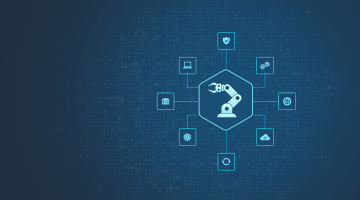

Insurance software modernization: Why legacy policy administration systems are holding insurers back
The recent Accenture report highlights that 60% of insurance companies find operational efficiency as their primary transformation goal. The strive for efficiency is caused by market trends, customer demands, the desire to decrease operational costs, and grow revenue. However, insurance software modernization may sometimes seem like a goal that would never be achieved. Legacy core systems hinder innovation and operational agility. And here is why.
insurance software modernization
Reason 1 – Outdated policy administration systems are inflexible, making it difficult to launch new products quickly
Often built on proprietary frameworks, legacy core systems are too complex, rigid, and require specialized (sometimes, rare) expertise to be upgraded. Traditionally, these systems were custom developed and modified on top of traditional enterprise solutions available on the software market. Each time an insurance company wants to improve or adapt such a system to meet new business needs, it requires a team of people who have a deep knowledge of how the system works. Having a team of in-house professionals or hiring specialists each time adds substantial costs to the company’s expenditure.
Another challenge is that older core systems lack the required modules to handle all operations in the policy administration’s lifecycle. Therefore, many carriers implement multiple systems developed using different programming languages and frameworks, which results in significant problems in maintaining those systems. The latter can’t correctly integrate with each other and need additional middleware and data lakes.
All this is not about the technology gap only — it’s about missed opportunities. Insurers can’t launch new products as quickly as their competitors, missing new customers and revenue.
Reason 2 – Legacy policy administration systems can’t be integrated with modern technology appropriately
Modern policy administration platforms smoothly work with customer-facing digital channels like mobile applications, web portals, and chatbots. The same with back-office tools like CRM systems, data analytics tools, and third-party APIs if required. If we speak about legacy systems, we can’t say the same thing. They were not developed to openly connect to other software. Of course, it blocks access to innovation which is so important nowadays as consumers demand it. You will agree that it’s more convenient to submit a claim through the mobile app instead of filling in a long form in a physical office.
Explore our customer-facing ready-made mobile app for insurance companies
Reason 3 – Aging core systems store data in siloed systems, not allowing insurers to analyze data effectively
Legacy insurance systems usually store data in distinct places by a certain category: business line, region, and function. It means that the company has separate data centers for each type of insurance (health, life, car, etc.), each country or region, and each operation (underwriting, claim management, billing, etc.). In this case, each database functions separately and doesn’t sync with each other automatically.
legacy core insurance modernization
Because information is isolated, it’s difficult to get a real-time view of all operational activities, customer interactions, and things that require immediate attention. These challenges lead to delays in responses to customer requests, ineffective decision-making, and risk of errors.
Reason 4 – Insurance companies spend up to 70% of their IT budget on maintaining legacy systems, according to PWC
As we mentioned above, older systems were built using different frameworks, often custom, to meet the business needs of a particular insurance company. Keeping these systems running constant technical support, special IT skills, and substantial costs. Thus, the bigger part of the IT budget is spent on maintaining legacy software instead of investing in innovative technologies like artificial intelligence or IoT.
Explore our Policy Administration System for insurers, captives, and captive managers
Reason 5 – Reliance on legacy software strengthens resistance to change
In any conservative industry like insurance, employees and leadership get accustomed to existing workflows and software. Established processes and the usage of familiar systems discourage the adoption of new tools that usually require learning efforts and adjustment.
Surely, the transition from the old system to a new one is challenging. Executives worry about data migration risks, business interruptions, and system outages. High switching costs also add uncertainty about the need for modernization.
This resistance creates a cycle: the older the software, the more entrenched processes and people become, and the less flexible the organization is when it comes to innovation. This culture of inertia can prevent insurers from adopting new digital tools, responding to market changes, or improving customer experience.
What can you do to embrace insurance software modernization?
It is obvious that legacy technology is no longer sustainable. According to recent Accenture research, 79% of insurers are investing in digitization, considering it as a top lever of importance now vs 3-5 years ago. Along with digitization stand other critical levers like automation and technology modernization. In their research, Accenture admits that despite the quick rise of technology investments, many insurance companies still are concerned about the impact, being unsure about achieving clear and measurable goals.
policy administration system
Considering outperformers’ success in digitization, Accenture highlighted the following enablers that can help with attaining measurable outcomes:
- Use workflow management and automation to improve efficiency and cut costs
- Invest in self-service and omnichannel systems to drive customer engagement
- Improve operating models by enhancing data exchange and collaboration with partners
Here at DICEUS, we also believe that investing in the right technology solutions can help insurers reach measurable outcomes in business. Our company offers a ready-made policy administration system with pre-defined logic and a set of functionalities to drive digitization for insurers, captives, and captive managers. Please contact our team for more information.





